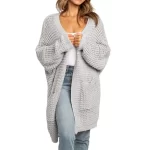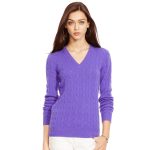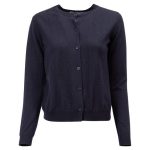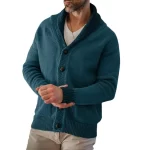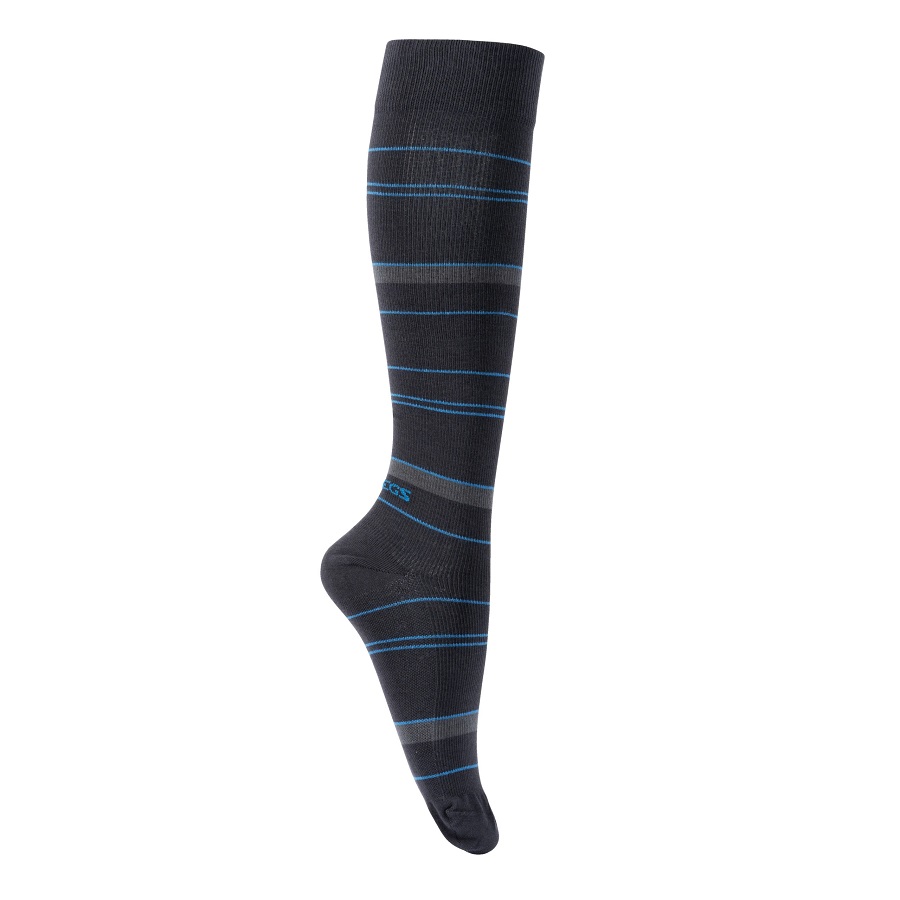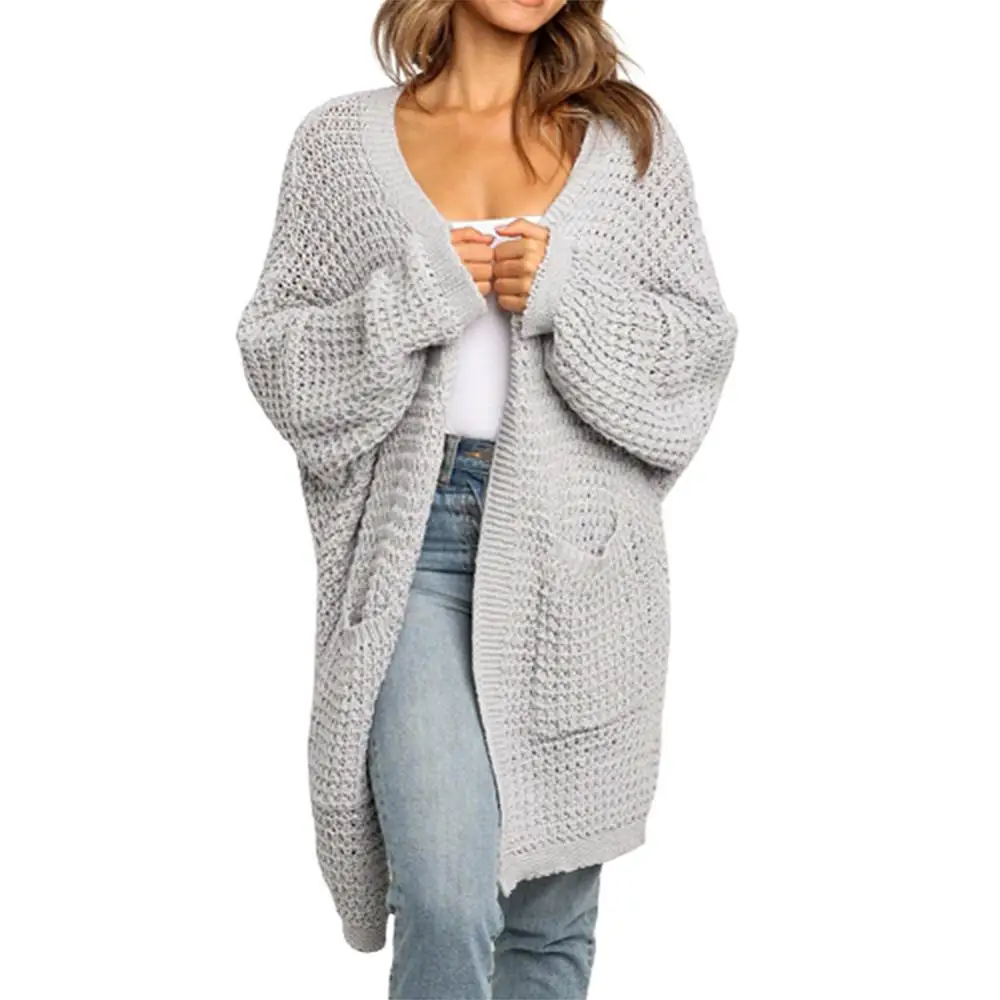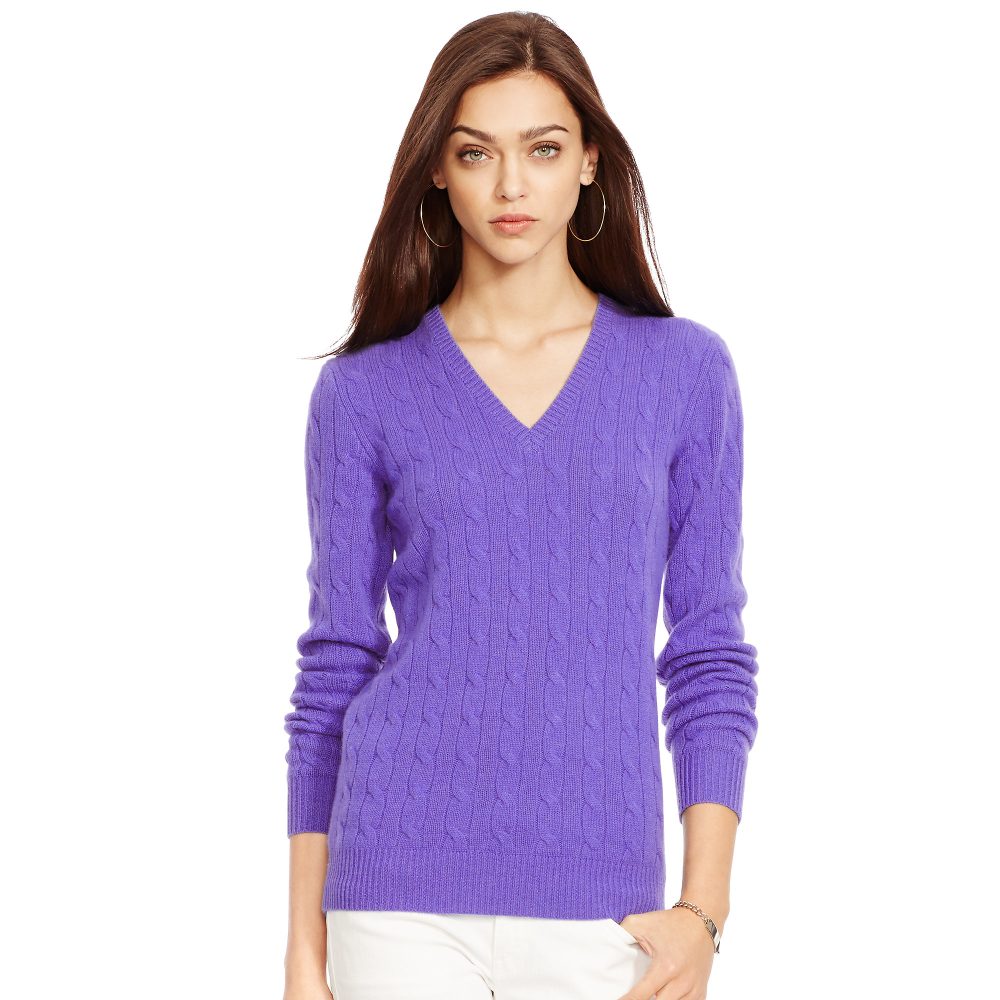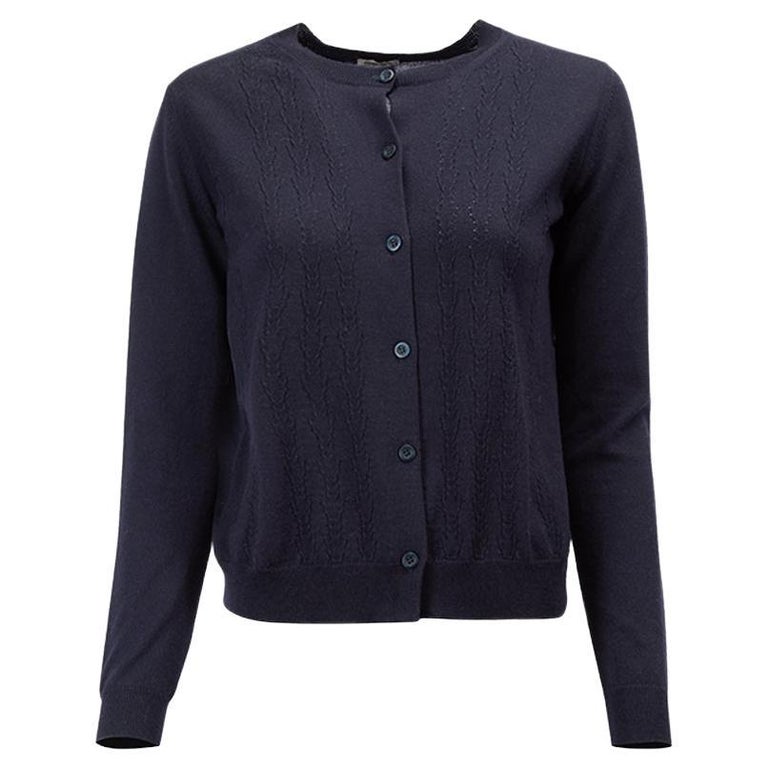What Are Graduated Compression Socks?
Graduated compression socks are special hosiery designed to promote blood flow. They apply varying degrees of pressure to the leg. The most significant pressure is at the ankle. It decreases up the leg. This design aids in venous return to the heart. Athletes commonly use these socks to enhance performance and recovery.
The key to their effectiveness lies in their graduated pressure. It is not the same across the entire length of the sock. Health professionals often recommend them for certain medical conditions too. These conditions include varicose veins and lymphedema.
However, it’s not just for medical use. Many people now wear graduated compression socks for comfort during flights or long hours on their feet.
In summary, these socks are a versatile tool. They can boost circulation, support veins, and reduce swelling. They can also help muscles during and after exercise. Remember, graduated compression socks come in various styles and compression levels. It’s important to choose the right pair for your specific needs. We will cover how to do this in a later section.
The Science Behind Compression Socks and Athletic Performance
Graduated compression socks offer more than just a tight fit. They are based on a principle called ‘graduated compression’. This principle works to increase circulation and reduce muscle fatigue. Let’s look closer at the science that makes them a favorite among athletes.
The magic begins at your ankles. Here, graduated compression socks apply the most pressure. This support is essential. It helps to push blood back up your legs. As a result, your veins work less and your circulation improves.
Going up the leg, the pressure eases. This gradual decrease in compression assists the natural flow of blood. It encourages oxygen-rich blood towards your muscles. This means muscles get the nutrients they need quicker during a workout.
Another scientific factor is lactic acid. Your muscles produce it during exercise. Too much lactic acid can cause soreness and fatigue. However, with better blood flow from compression socks, your body can clear lactic acid faster. This results in less soreness and quicker recovery.
Finally, stability is a key benefit. The pressure from the graduated compression socks supports muscles. It also reduces vibration. Less muscle movement means less energy spent. So, you can perform longer without getting tired.
In summary, these socks help athletes perform better. They enhance blood flow, speed up recovery, and stabilize muscles. All achieved with the smart design of graduated compression. Remember to choose the right level of compression to maximize these benefits.
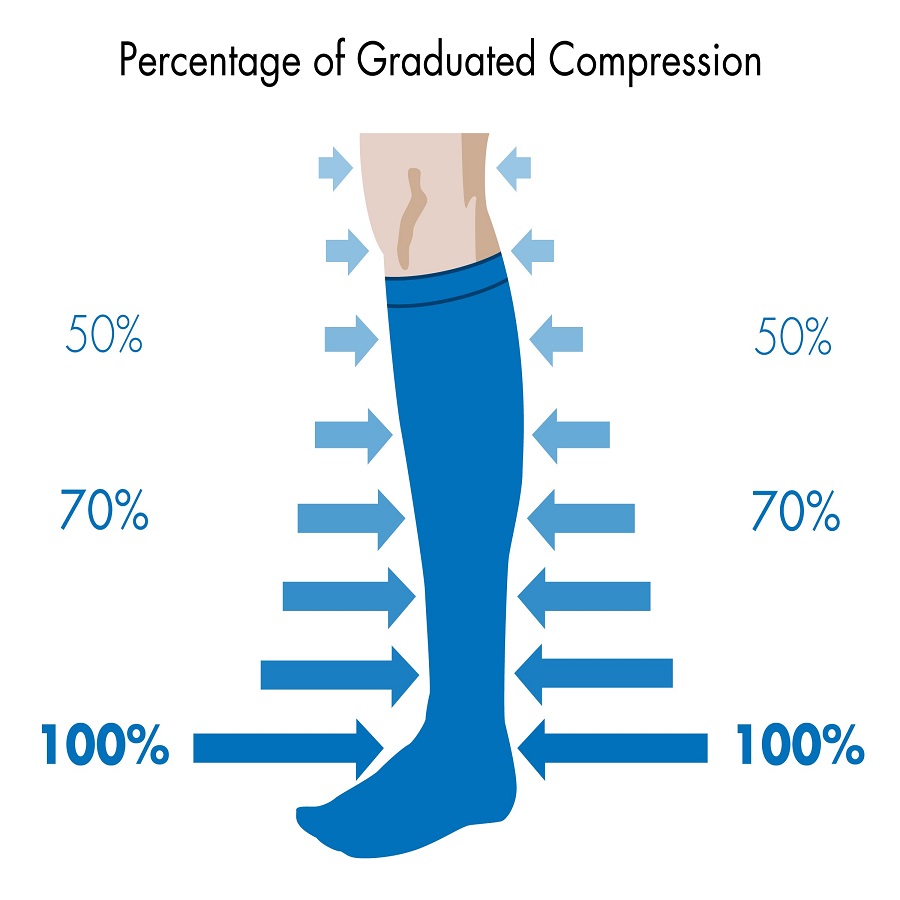
How to Choose the Right Compression Socks for Your Needs
Choosing the right compression socks is crucial. Your comfort and the socks’ effectiveness depend on it. Not all socks are the same. Here’s what to consider to find your perfect pair.
Consider Compression Levels
Compression levels are measured in millimeters of mercury (mmHg). They range from light (8-15 mmHg) to extra firm (30-40 mmHg). Light compression is good for daily wear. Firm levels are best for sports or medical needs. Pick a level that matches your activity.
Check the Material
Socks come in different materials. Some are made of cotton, others of synthetic fibers. Cotton is softer and breathable. Synthetics offer more durability and moisture-wicking. Choose a material that suits your skin and needs.
Get the Right Fit
A good fit is key to effective compression. Too tight and it can hinder circulation. Too loose and you lose the benefits. Measure your legs to get the right size. Remember, your shoe size and leg size may differ.
Look for Graduated Compression
Graduated compression is what you need. Ensure the socks are tighter at the ankles and less so higher up. This design boosts blood flow the most.
Consider Your Activity
Different activities need different socks. Runners might want light, moisture-wicking socks. Travelers could prefer firmer support for long flights. Think about what you’ll be doing in the socks.
Check for Specialty Features
Some socks have extra features. They may have padded zones for comfort. Others have antibacterial properties. There might be options designed for specific sports. Look for features that meet your unique requirements.
Finding the right graduated compression socks matters. Match your needs with the correct compression, material, fit, and features. Comfort and performance will follow.
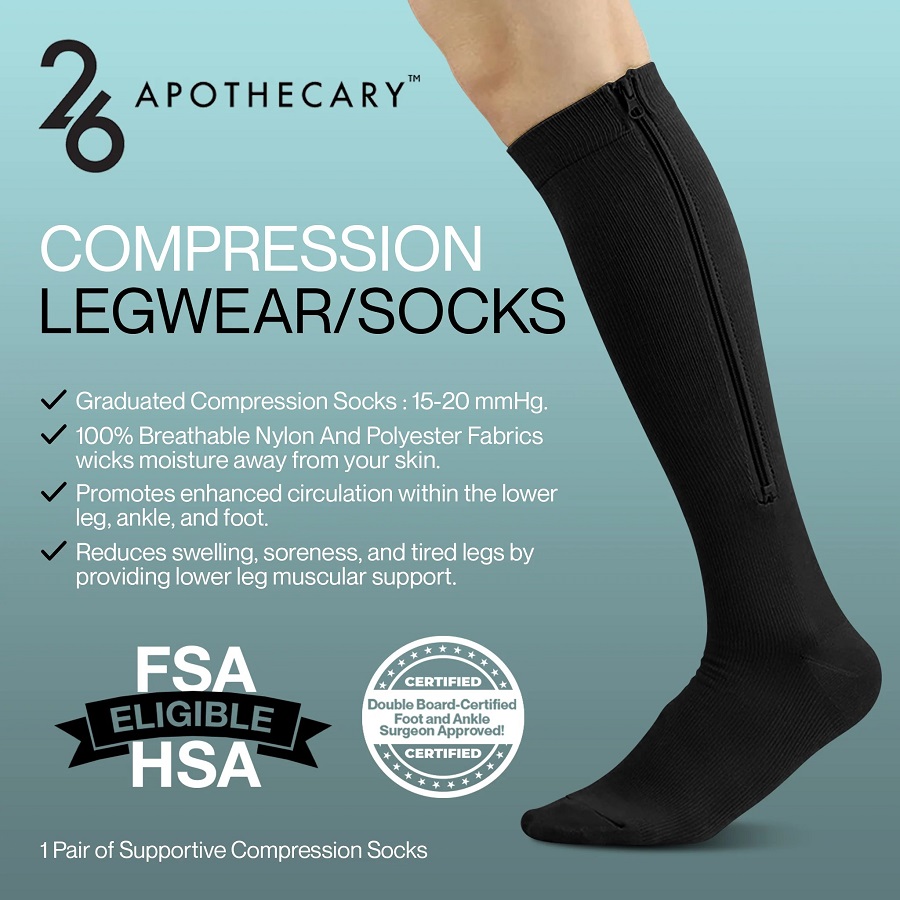
Benefits of Using Graduated Compression Socks for Athletes
Graduated compression socks provide significant advantages for athletes. These benefits span from enhanced performance to improved recovery times. Below are key benefits athletes can expect from incorporating graduated compression socks into their gear.
Improved Circulation During Performance
The primary function of these socks is to boost blood flow. For athletes, this means more oxygen reaches the muscles. This can lead to better endurance and strength when competing or training.
Reduced Muscle Fatigue and Soreness
Athletes wearing these socks experience less fatigue. The socks limit the buildup of lactic acid by promoting faster blood flow. This translates to less muscle soreness and quicker recovery post-exercise.
Lower Risk of Varicose Veins
Long-term use of graduated compression socks can help prevent varicose veins. These are common in athletes due to the stress placed on their legs.
Decreased Risk of Deep Vein Thrombosis (DVT)
During long travels for competitions, athletes can be at risk of DVT. Graduated compression socks reduce this risk by enhancing circulation.
Better Muscle Stability
With less muscle vibration, athletes experience greater stability. This can improve overall performance and decrease the risk of injury.
Enhanced Recovery Post-Workout
Recovery is as important as the performance. These socks help clear metabolic waste quicker. This means muscles recover faster, allowing athletes to train harder and more often.
Remember, the benefits are maximized when the graduated compression socks are chosen and used correctly. Next, we will dive into the role these socks play in recovery and injury prevention.
The Role of Compression Socks in Recovery and Injury Prevention
Recovery and injury prevention are critical for athletes. Graduated compression socks play a crucial role in both. When athletes wear these socks during and after workouts, they gain various benefits.
Enhancing Recovery Post-Exercise
By wearing graduated compression socks after exercise, athletes aid their recovery. The socks improve blood flow. This action helps clear lactic acid and other metabolic wastes from tired muscles. As a result, soreness reduces and recovery time shortens.
Short recovery times allow athletes to train more often. This consistency can lead to better performance. They can also tackle more intensive workouts with confidence in their recovery tools.
Preventing Injuries
Muscle stabilization is vital in preventing injuries. Graduated compression socks provide this stability. They reduce muscle vibration and movement. This support can lower the chances of strains and sprains.
Moreover, good circulation from wearing these socks can prevent common issues. One such issue is shin splints. They can be painful and hinder athletes. With graduated compression, the risk goes down.
Supporting Joint Health
Healthy joints are important for movement and strength. Graduated compression socks help maintain joint health. They do this by ensuring good blood flow around the joints. This helps with swelling and stiffness, allowing for better mobility.
In conclusion, choosing the right graduated compression socks is a game-changer. They support quick recovery, prevent injuries, and support joint health. Remember, proper fit and compression level are key to these benefits. Next, we’ll discuss tips for properly using compression socks to their full potential.
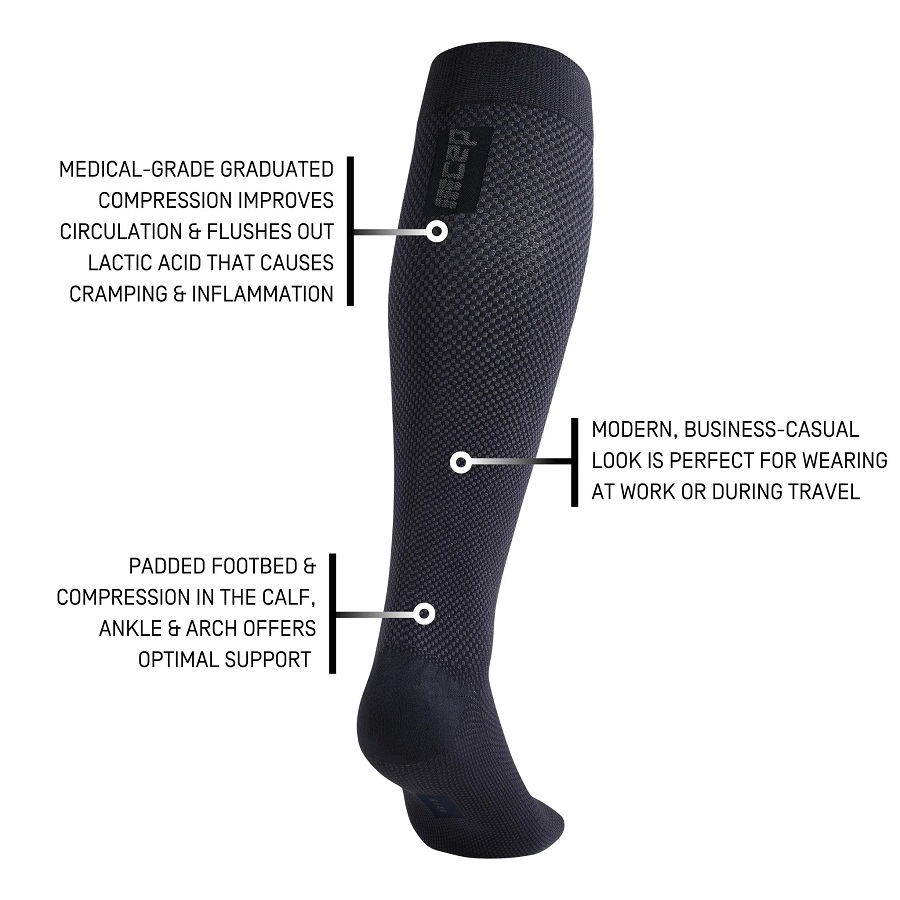
Tips for Proper Usage of Compression Socks
To maximize benefits, using graduated compression socks correctly is key. Here are some tips for proper usage:
Wear Them During The Right Time
For athletes, it’s best to wear socks during workouts and competitions. This ensures muscles receive enough oxygen and support when they need it most. But also consider wearing them post-exercise to aid recovery.
Don’t Overuse Them
While beneficial, avoid wearing the socks all the time. Overuse may lead to discomfort or even lessen their effectiveness. Stick to wearing them during physical activity and recovery.
Put Them On Properly
To get the full effect, put them on smoothly and evenly. Avoid bunching up the material. Socks should be snug on the ankles with less compression as they go up the leg.
Listen To Your Body
Pay attention to how your legs feel. If you experience discomfort or pain, take the socks off. They should enhance comfort, not detract from it.
Combine With Other Recovery Methods
Compression socks work well with other recovery techniques. This can include stretching, hydration, and a healthy diet. Use the socks as part of a holistic recovery approach.
By following these tips, you ensure that you get the most out of your graduated compression socks. Always choose the pair that fits well and meets your specific athletic needs.
Debunking Myths: What Compression Socks Can and Cannot Do
With the growing popularity of graduated compression socks, various myths have arisen. It’s important to separate fact from fiction to understand their true capabilities.
Can Improve Circulation
One fact stands: these socks can boost blood flow. This is not a myth. They apply pressure at the ankle and less up the leg. This process supports venous return.
Cannot Cure Medical Conditions
Compression socks support medical treatment but do not cure diseases. They are part of a broader approach, not a standalone solution.
Can Reduce Swelling and Fatigue
Athletes notice less swelling and fatigue when they use the socks. The improved circulation from wearing the socks makes this possible.
Cannot Replace Exercise or a Healthy Lifestyle
This is a myth. Socks enhance performance but don’t replace good exercise habits and a balanced diet.
Can Help Prevent Certain Medical Issues
Long-term use may prevent problems like varicose veins. They are not a guarantee but can help as a preventive measure.
Cannot Offer Benefits If Worn Incorrectly
Wearing the socks wrong negates their benefits. Make sure they fit right. They should feel snug, not painful or too tight.
Understanding what graduated compression socks can and cannot do helps users. It lets them make informed choices and use the socks effectively. Remember, consulting a healthcare professional is always wise for medical uses.
Best Practices for Care and Maintenance of Compression Socks
To ensure your graduated compression socks last, good care is essential. Here are some practices to keep them in top shape:
Wash with Care
Wash your socks gently to maintain their elasticity and compression levels. Use cold water and a mild detergent. Avoid bleach or fabric softeners that can break down fibers.
Dry Properly
Do not wring out your socks. Wringing can stretch them out and lose compression. Air dry them instead. Keep them away from direct heat or sunlight.
Follow Manufacturer Instructions
Always check the label for specific care guidelines. Different brands may have different requirements. Follow their instructions to keep your socks in the best condition.
Regularly Inspect for Wear and Tear
Check your socks often for any signs of damage. Look for holes, thinning, or stretched areas. Replace them if they no longer provide the right compression.
Store Correctly
Keep your socks flat or rolled in a drawer. This will prevent them from stretching out. Avoid folding them as this may create creases and affect the compression.
Alternate Pairs
If possible, have more than one pair of graduated compression socks. Alternating between pairs can extend their lifespan and maintain proper compression.
By following these simple tips, you can maximize the life and effectiveness of your compression socks. Proper care will help you continue to reap the athletic performance benefits they offer.

